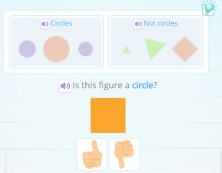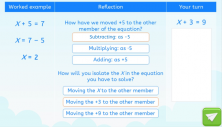This is the latest post as we continue with our analysis of Craig Barton’s book, How I Wish I’d Taught Maths about evidence-based education. Today we will talk about the chapter that discusses the use of worked examples and their relation to metacognition. Together they are a fundamental element of the learning process.
What Are Worked Examples? Are They Good for Learning?
Worked examples are not an exceptionally new idea. It is well known that they are the exercises and problems used in explanations to link abstract knowledge with a practical representation and application. However, these examples are commonly hidden at the time of the student’s practice. This is done in order to get them to ‘try and practice’.
There are students who, with a single exposure to an example, have the ability to acquire the knowledge and use it in other situations. But there are other students who, in this heuristic process, need more exposure or manipulation time with the worked example. However, this is not because they want to ”copy” or ”are lazy and don’t want to think.” Rather, their cognitive process requires it.
The worked examples are good for learning because they act as scaffolding during the process. They allow students to establish cognitive connections between previous knowledge and knowledge to be acquired. As well as between the conceptualization of that knowledge and its implementation in different situations.
Because of this, at Smartick we develop exercises with worked examples that allow the student to reflect on the object of knowledge. They are able to apply their learning while also getting the support needed to verify their answers.

How Are Worked Examples Related to Metacognition?
Metacognition is the process of reflection and development of consciousness about one’s thoughts and learning processes. It is at this point that Craig Barton makes a real value proposition with the development of the enriched worked examples.
These enriched worked examples add a third element that invites reflection on the cognitive process that the student must carry out to apply the concept being worked on and integrate learning. Even though we recognize the beneficial impact that the use of worked examples can have on those students who need more exposure and manipulation time to work and apply concepts. The idea of worked examples is also to guide the student’s thinking and their use allows for this. It speeds up the learning process and reroutes it, which prevents the student from integrating incorrect structures caused by error production.

Because of this, at Smartick we believe in scaffolding the learning process and in the importance that both the awareness of the process itself and the verification of results. For this reason, we study, learn and develop exercises that include the use of guided examples. This invites our students to utilize metacognition because learning is not only being able to apply knowledge but to explain the process as well.
References:
- Barton, Craig. “Introduction.” In How I Wish I’d Taught Maths: Lessons Learned from Research, Conversations with Experts, and 12 Years of Mistakes, 16-23. Melton, Woodbridge: John Catt Educational, 2018.
Learn More:
- The Five Stages of Deliberate Practice
- Cognitive Load Theory and Multimedia Learning
- Characteristics of Purposeful Practice
- Why Are Examples Important When Teaching Mathematics?
- Interleaving vs Blocked Practice to Learn Math







